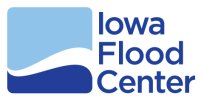HELP GUIDE HOME
How to use PDFs
The pdf maps contain the same data available on the web interface, but allow offline usage. The pdfs contain a different layer for all the map and label objects included. These layers can be viewed and enabled or disabled by clicking on the layer icon on the left and then clicking the eye icon by each layer. When opening a pdf map, the two depth map layers and the aerial photo will be turned off by default. These three layers should be left off while zooming and panning because they can cause the map to be very unresponsive if they are left on. They should be turned on after the desired view has been obtained.Understanding Inundation Information
Additional pdfs can be exported from this original pdf in order to make custom maps. To export a new map with specific layers, first turn off layers that you do not want exported, and turn on layers that you do want exported. Next click on file >> save as other >> archivable pdf and save the file in the desired location.
Saving the pdf in this way will remove the layers that were turned off, however, all layers will be compressed into a single image and you will not be able to turn specific layers on and off. Keep this in mind when selecting what layers to keep. You can create as many custom maps as desired this way. Alternatively, the maps can be opened and modified in Adobe illustrator to create custom maps while preserving layer functionality.
The inundation maps shows the inundation boundaries for the 0.2%, 0.5%, 1%, 2%, 4%, 10%, 20% and 50% annual exceedance probability flood events. The different flood events are overlaid on top of each other to provide a gradient of inundation probability. The legend on the map indicates colors that correspond to the different flood events.Understanding Depth Information
The depth maps are have colors corresponding to depth intervals of 0-0.5 feet, 0.5-1 foot, 1-2 feet, 2-4 feet, 4-6 feet, 6-8 feet, and over 8 feet. The map legend can be used to identify which color corresponds to which depth range. There can sometimes be sharp changes in depth at confluences where two or more streams join together; this is because streams are modeled separately and then joined into a single dataset. Depth data may not be accurate in the main channel due to LiDAR’s inability to penetrate the water’s surface or thick vegetation cover near the channel.Understanding Scour Information
There are two or three scour potential graphics that can be turned on. The moderate and high scour potential layers will always be present, and some maps will have an additional layer named “Detailed Study Recommended” that indicates where a more detailed study would be beneficial. The scour data shown in these maps is for the 1% annual exceedance probability, but it is still relevant for other low probability flood events (2%, 0.5%, and 0.2%), provided the inundation boundaries are not drastically different from the 1% event.
There are many factors that influence when scour will occur. Due to the approximate nature of the methods used to create scour maps, the final scour results are grouped into the two categories, moderate and high scour potential, in order to create simple and easy to use maps.
Moderate scour potential areas are areas that the IFC engineers believe are likely to experience soil loss and have a higher potential for soil loss relative to surrounding areas. The amount of soil loss could be minor or moderate, but it is also possible these areas may not experience any scour due to the variability or soil type, seasonal vegetation cover, or presence of crops. The areas indicated as high scour potential are areas where the chance for scour is likely relatively higher than the moderate scour potential areas and the possibility of severe scour is more likely. However, the high scour potential areas are not a guarantee of scour either.
These scour potential graphics are intended to show approximate areas of scour potential, not delineate exact areas of scour.
It is important for the user to understand that scour predictions are for cover types as indicated by the 2009 High resolution land cover database. This means, for example, that if a high scour region is in a forested or grassland area, the protection against scour provided by the vegetation cover was considered, and scour is still expected to occur.
Cultivated crop regions, as indicated by the land cover data, are assumed to be bare and unplanted when predicting scour in order to present the worst case scenario. If crops are planted in such areas at the time of flooding, the scour risk would likely be reduced and would be less than what is shown on the maps. The High Resolution land cover dataset can be obtained from the NRGIS Library.
Scour data is intended only for floodplains. Accurate scour predictions for the main river channels can’t be made with the available data and presence or lack of presence of scour graphics in the channel does have any meaning.
Certain areas have very complicated channel geometry due to roads or presence of other obstructions. 1D modeling is subject to more errors in areas where the channel geometry is highly variable and may not be able to provide accurate scour data in such areas. These kind of areas would benefit from a more detailed study or 2D model that can account for more the complex channel geometry. Areas were the IFC recommends a more detailed study to obtain accurate results are shown with the cross-hatched graphic layer labeled “Detailed Study Recommended”. These areas may still contain the modeler’s best estimate of scour potential based on the 1D methodology, but the modeler has lower confidence in the results in these areas.




